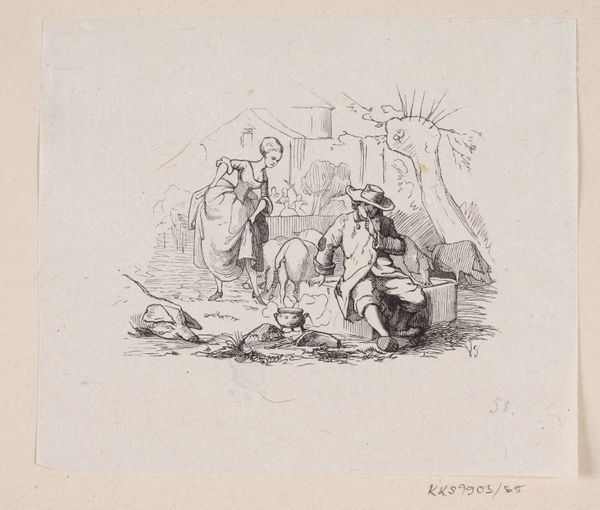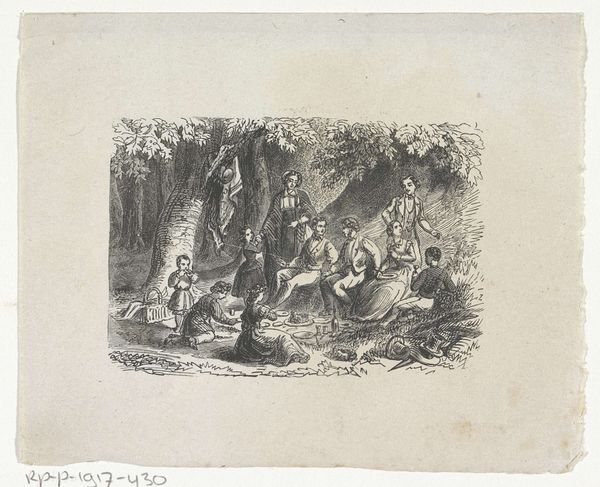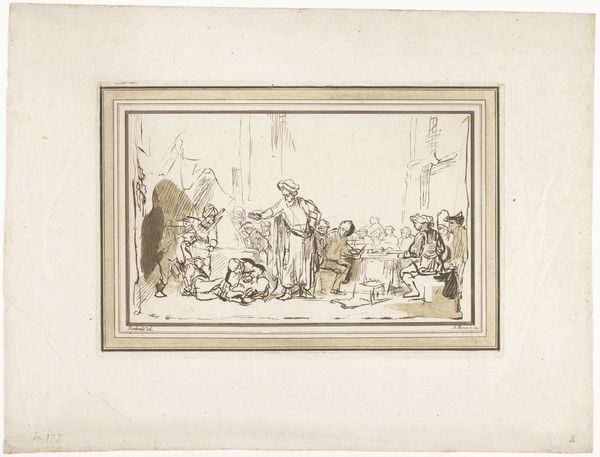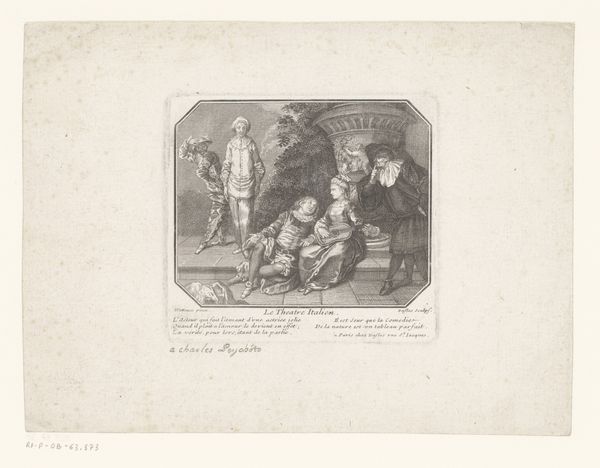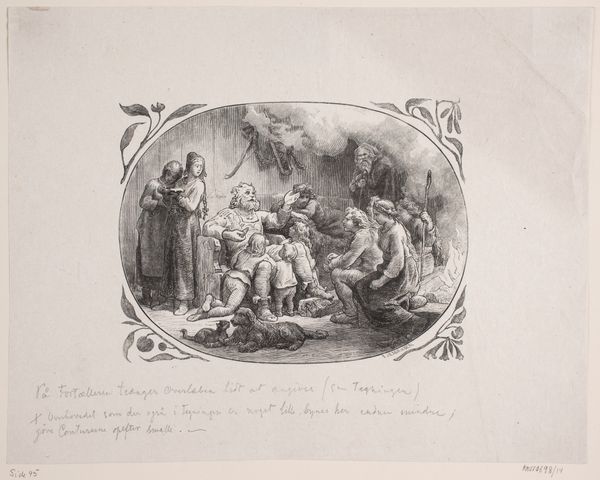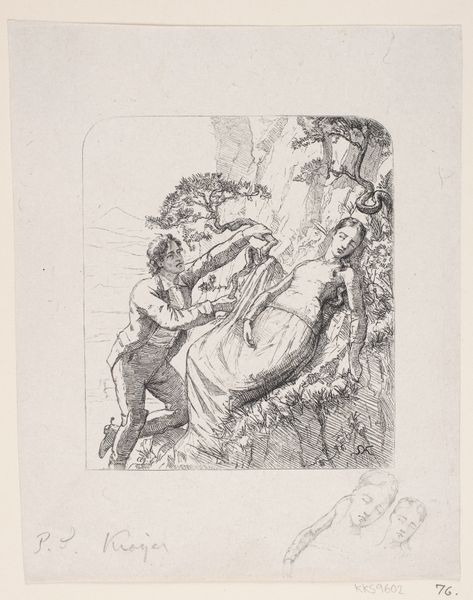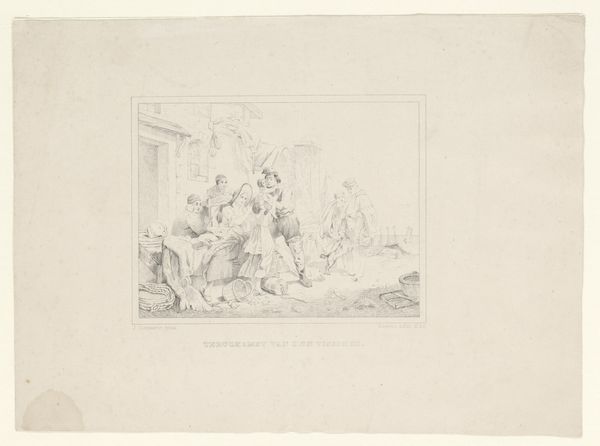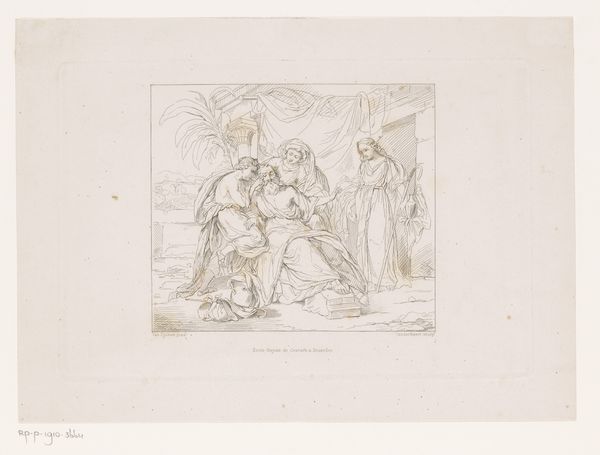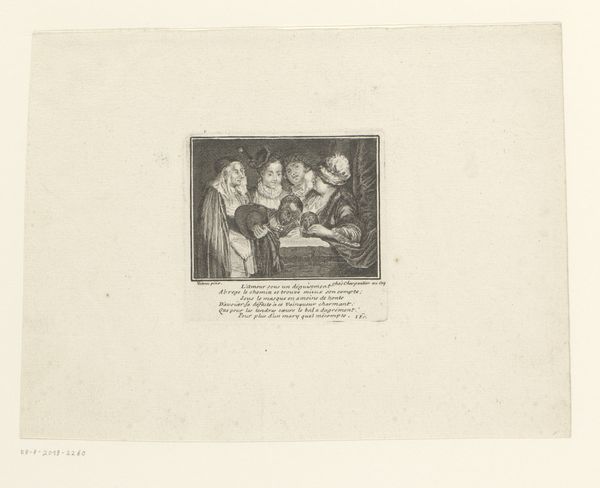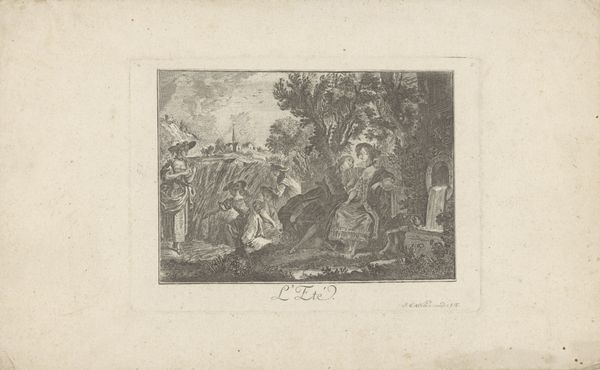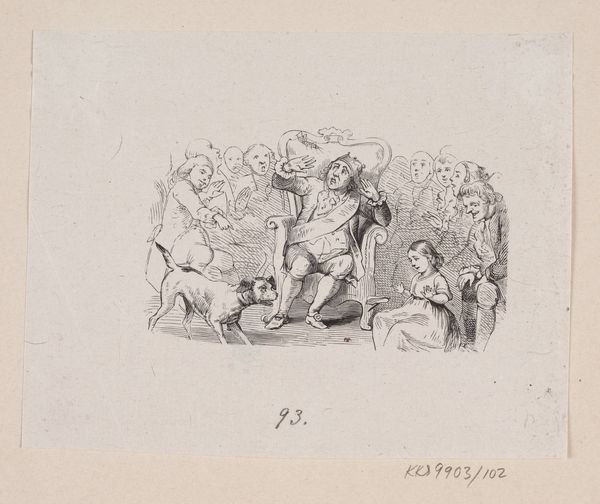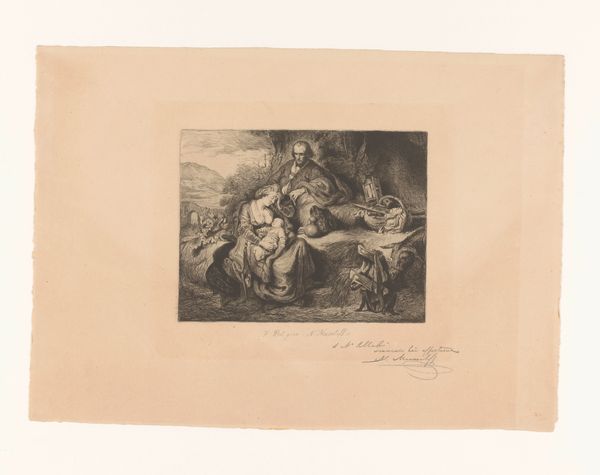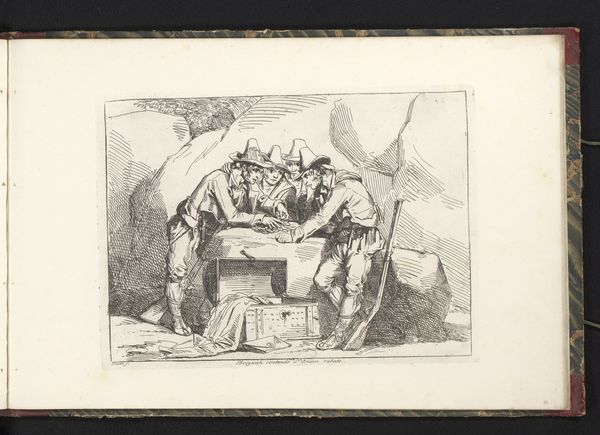
print, etching
#
narrative-art
# print
#
etching
#
etching
#
figuration
#
11_renaissance
#
history-painting
Dimensions: height 187 mm, width 237 mm
Copyright: Rijks Museum: Open Domain
Editor: So, here we have "Adoration of the Shepherds," a 19th-century etching by an anonymous artist, currently at the Rijksmuseum. It's quite a traditional scene, very subdued. What stands out to me is the use of line to create a sense of depth, despite the limited tonal range. What do you see in this piece? Curator: I see layers upon layers of cultural memory encoded in this image. The adoration scene itself is, of course, a powerful symbol of humility and divine grace. But look at the placement of the figures, arranged within that cave-like structure; how might that imagery speak to us? Editor: I hadn't thought about the cave itself much. Is it symbolic? Curator: Absolutely! The cave often represents the womb, a space of both birth and darkness. Here, it perhaps symbolizes the emergence of something new and transformative from a place of humble origins. And consider the shepherd kneeling: What is he offering? Editor: It looks like he is giving a woven basket to the baby Jesus. Curator: Precisely. And that simple gift underscores the connection between the earthly and the divine, a theme that has resonated through centuries of religious art. The humblest of gifts may symbolize deeper meanings. The overall image transmits more than one story. Editor: So, it’s about these embedded meanings? Curator: In a sense, yes. It’s about how symbols persist and evolve, shaping our understanding of ourselves and the world around us, and creating new meaning each time. Editor: That's a really insightful perspective. I see much more now than I did before! Curator: Art offers an enduring visual conversation. It invites us to delve into a deep well of imagery. Each piece speaks volumes once we develop the ability to decode the embedded symbolism.
Comments
No comments
Be the first to comment and join the conversation on the ultimate creative platform.
